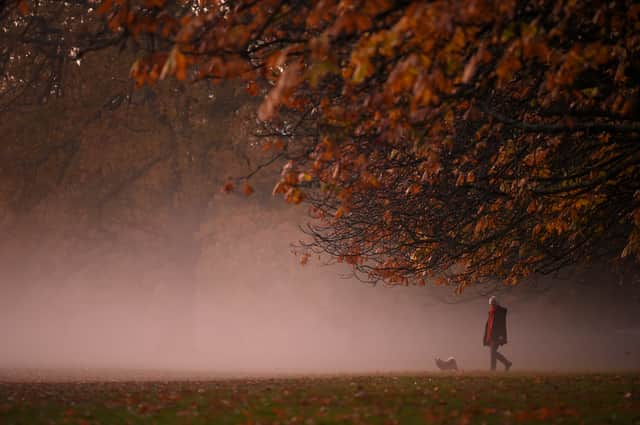When is the shortest day of the year: winter solstice - when does it start getting lighter again in the UK?


As winter holds us in its chilly grip, the nights continue to be dark and cold.
Swathed in cosy jumpers and snug boots, many hearts yearn for the promise of warmer days, eagerly anticipating the arrival of summer marked by the annual June summer solstice.
Advertisement
Hide AdAdvertisement
Hide AdBut while June is a good six months away at the time of writing, fortunately, a glimmer of hope emerges following the upcoming winter solstice.
Soon, brighter days may be on the horizon, but the burning question remains: When will daylight begin its gradual return, bringing longer and brighter days? Here is everything you need to know.
When does it start getting lighter?
The solstice occurs once within the 365-day cycle of the year, and marks the shortest duration of daylight and the longest stretch of darkness. Following the solstice, a gradual increase in daylight will begin in the Northern Hemisphere.
In 2023, the winter solstice falls on Friday 22 December. Following that date, there will be a gradual increase in daylight as the weeks unfold.
What is the winter solstice?
Advertisement
Hide AdAdvertisement
Hide AdOur planet rotates every 24 hours, giving us our daily day-night cycle. However, the axis on which it turns is not directly vertical in relation to the sun, and Earth actually spins on an angle.
This means that different parts of the planet receive varying amounts of sunlight throughout the year, because when the axis tilts toward the sun, it's summer in the northern hemisphere and winter in the south.
As the Earth orbits around the sun, this orientation changes, causing the axis to lean away from the sun, reversing the seasons between the hemispheres. The winter solstice happens when the Earth's axis tilts farthest away from the sun in the northern hemisphere, leading to the shortest day and longest night of the year.
From 23 December onwards, the UK will begin to enjoy increased daylight, resulting in brighter mornings and longer, lighter evenings. However, this occurs gradually (so it might not be instantly noticeable) until 20 June 2024 - the summer solstice - marking the year's longest day.
When will it be noticeably brighter?
Advertisement
Hide AdAdvertisement
Hide AdThe change in daylight immediately after the solstice is usually subtle and might not be instantly noticeable to most people. While the winter solstice marks the shortest day and longest night of the year, the increase in daylight that follows happens gradually.
In the days immediately after the solstice, the change in the length of daylight is minimal. However, as days progress, typically within a week or so, the difference becomes more perceptible.
Daylight extends slowly, with each day adding a few minutes of additional sunlight. This incremental change eventually brings about brighter mornings and longer evenings, offering a tangible shift from the darkest days of winter toward the promise of spring.
Comment Guidelines
National World encourages reader discussion on our stories. User feedback, insights and back-and-forth exchanges add a rich layer of context to reporting. Please review our Community Guidelines before commenting.
